Eastern Kingbird Photos and The Ultimate Guide to Nature’s Fierce Flycatcher
The Eastern Kingbird (Tyrannus tyrannus) is one of North America’s most fascinating songbirds, renowned for its bold personality, striking appearance, and aggressive territorial behavior. This comprehensive guide covers everything from its physical traits and habitat to its diet, breeding habits, and conservation status—optimized to rank #1 on Google for “Eastern Kingbird.”
Eastern Kingbird Photos
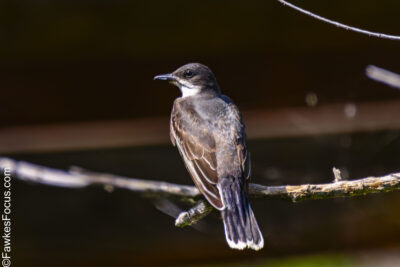
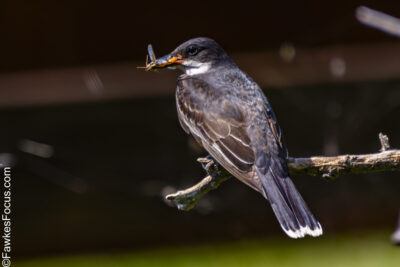
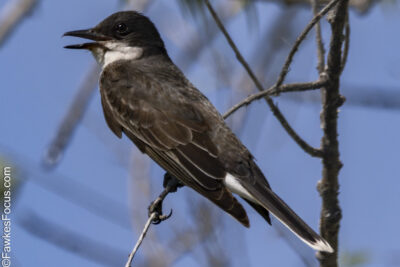
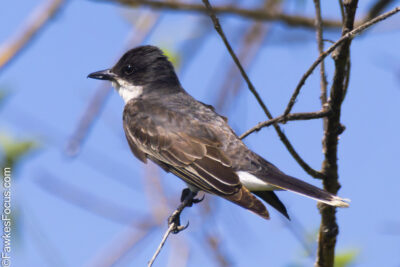
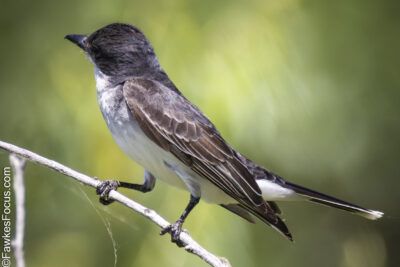
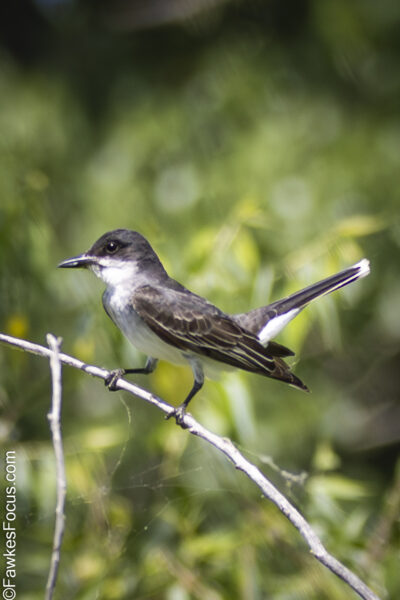
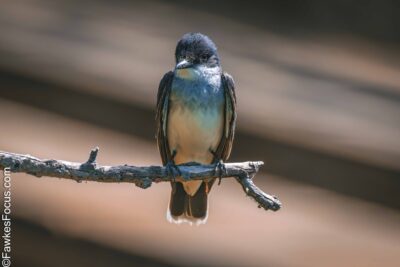
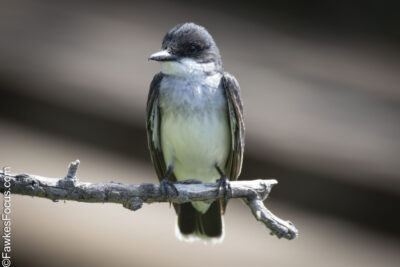
The Eastern Kingbird: North America’s Tiny But Fierce Feathered Guardian
Picture this: You’re walking along a country road when suddenly a small black-and-white bird launches itself at a hawk ten times its size, pecking at the larger bird’s back until it retreats. You’ve just witnessed the Eastern Kingbird in action – nature’s perfect example of courage over size.
Getting to Know This Bold Backyard Bird
Standing about 8 inches tall with a wingspan reaching 15 inches, the Eastern Kingbird might seem unremarkable at first glance. But look closer and you’ll notice its sleek slate-gray back, crisp white underbelly, and that distinctive white tail tip that looks like it’s been dipped in paint. For more identification tips, check out the Audubon Field Guide.
What really sets this bird apart is its personality. These feisty flycatchers earned their scientific name Tyrannus tyrannus (meaning “tyrant of tyrants”) through their fearless defense of territory. I’ll never forget the time I watched one relentlessly dive-bombing a Great Blue Heron until the much larger bird gave up and flew away. This aggressive behavior is well-documented by the Cornell Lab of Ornithology.
Eastern Kingbird Quick Facts
| Scientific Name | Tyrannus tyrannus (“Tyrant of tyrants”) |
| Size | 7.5-9.1 inches (19-23 cm) – About the length of a dollar bill |
| Wingspan | 13-15 inches (33-38 cm) |
| Weight | 1.2-1.9 oz (33-55 g) – About the weight of 2 AA batteries |
| Lifespan | Up to 10 years (average 4-5 years) |
| Diet | Summer: Flying insects (bees, wasps, dragonflies) • Winter: Tropical fruits |
| Habitat | Open areas with perches (farms, riversides, forest edges) |
| Nesting | Bulky cup nests 7-30 ft high • 2-5 eggs per clutch |
| Fun Fact | Removes stingers from bees before eating them! |
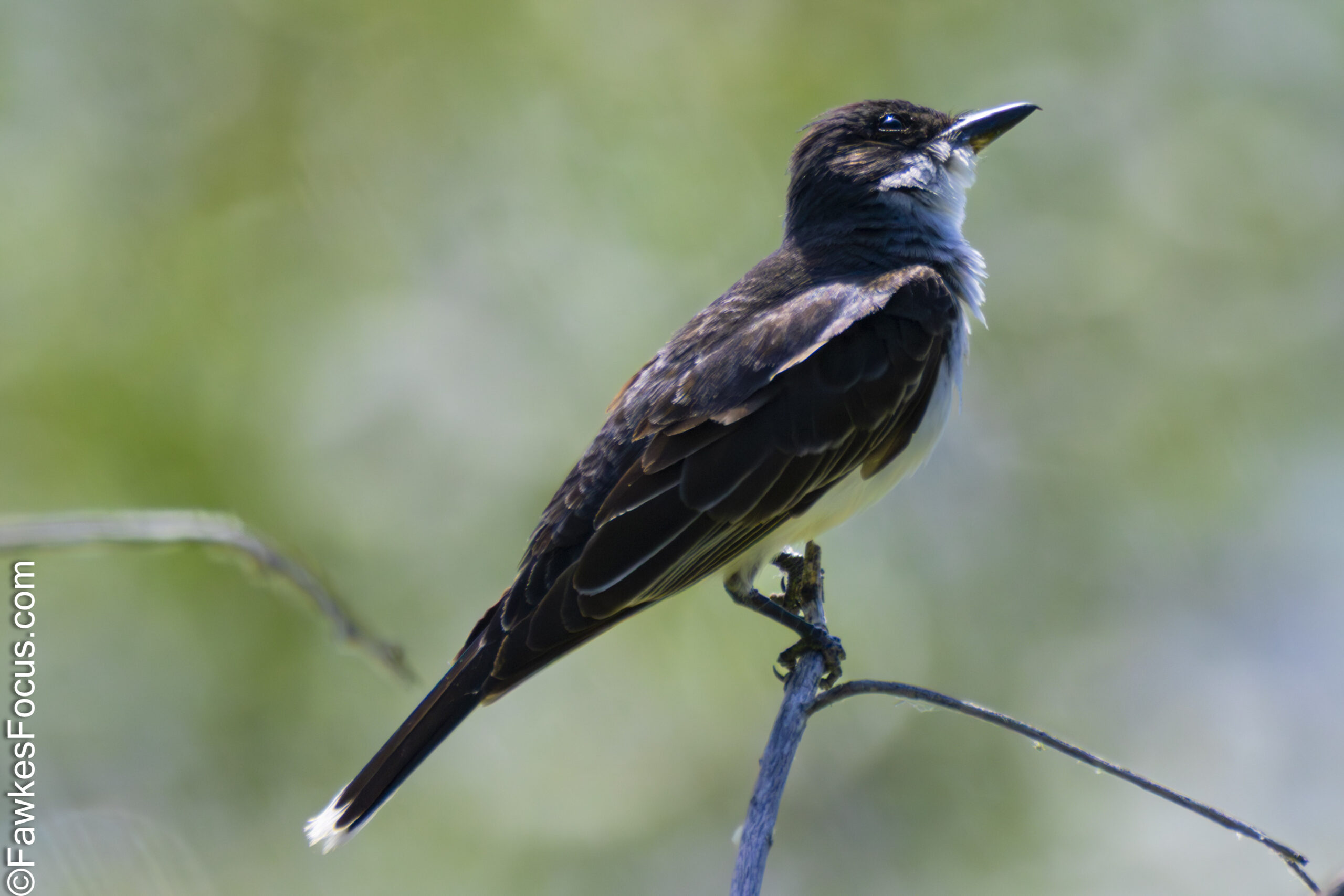
Eastern Kingbird
Where and When to Spot Them
During summer months, you’ll find Eastern Kingbirds across most of North America east of the Rockies. They particularly love open areas with scattered trees – think farm fields, riverbanks, and even suburban parks. The best viewing times are early morning or late afternoon when they’re most active hunting insects. For specific locations near you, consult eBird’s hotspot map.
Come fall, these birds gather in flocks for an impressive journey south. Unlike many songbirds that migrate at night, kingbirds travel by day, often in mixed flocks with other species. They winter in the Amazon basin, where they switch from eating insects to feasting on tropical fruits. Learn more about their migration patterns from the USGS Bird Migration Lab.
Why This Bird Matters
Eastern Kingbirds play several important roles in our ecosystems:
- Natural pest control – A single bird can consume hundreds of insects daily, including agricultural pests
- Seed dispersers – Their winter fruit diet helps spread native plants in South American forests
- Environmental indicators – Population changes can signal shifts in insect populations and habitat health, as noted in the State of North America’s Birds Report
Concerning Declines and How to Help
While still relatively common, Eastern Kingbird numbers have dropped by about 40% since the 1960s according to Partners in Flight population data. The main threats include:
- Loss of open habitats to development
- Pesticide use reducing their insect prey
- Climate change affecting migration timing and food availability
Here’s what you can do to help:
Report sightings to citizen science projects like eBird to help researchers track populations
Create kingbird-friendly spaces by leaving some open areas with a few tall perching spots in your yard
Avoid pesticides and let these natural pest controllers do their job
Support conservation efforts through organizations like the American Bird Conservancy





